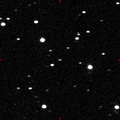Earth-crosser asteroid facts for kids
An Earth-crosser asteroid is an asteroid whose orbit crosses Earth's orbit. Imagine a cosmic race track. Earth has its own lane, and these special asteroids have paths that sometimes cross over Earth's lane. This means they can get quite close to our planet!
Contents
What are Earth-Crosser Asteroids?
Earth-crosser asteroids are small, rocky objects that orbit the Sun. Their paths are not always perfectly circular. Sometimes, their orbits stretch out, bringing them closer to the Sun. Other times, they swing further away. When their path crosses Earth's path, they are called Earth-crossers.
Why are They Important?
These asteroids are important because they can come very close to Earth. Scientists study them to understand their movements. This helps us know if any of them might ever pose a risk to our planet. It's like keeping an eye on traffic on a busy road.
How Do We Find Them?
Astronomers use powerful telescopes to find and track these asteroids. They take many pictures of the sky over time. By comparing these pictures, they can spot objects that are moving. Once an asteroid is found, its orbit is calculated. This helps predict where it will be in the future.
Famous Earth-Crossers
One well-known Earth-crosser asteroid is 2004 FH. It passed very close to Earth in March 2004. It was a small asteroid, about 30 meters (100 feet) wide. Events like this help scientists test their tracking methods. They also learn more about how these objects behave.
What Happens if an Asteroid Gets Too Close?
Most Earth-crosser asteroids are very small. They would likely burn up in Earth's atmosphere if they entered it. This would create a bright streak of light, like a meteor or "shooting star." Larger asteroids are much rarer. Scientists are always working to find and track them. This way, we can be prepared for any potential close approaches.
Images for kids
-
Diagram showing different asteroid paths. The yellow band marks the Earth's orbit; the red line marks the asteroid's path.
-
Flyby of the near-Earth asteroid 2004 FH in March 2004. The other object that flashes by is an artificial satellite.
See also
 In Spanish: Anexo:Asteroides que cruzan la órbita de la Tierra para niños
In Spanish: Anexo:Asteroides que cruzan la órbita de la Tierra para niños



